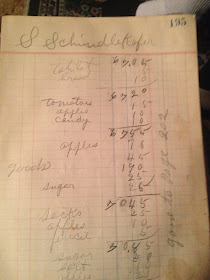In the olden times, folk medicine was widely practiced because
it was the only alternative for the treatment of sickness.
 |
| Credit |
Today, when we hear about some of them, they seem ridiculous; in other cases, we find that modern medicine is based on plants
that were long ago used in folk medicine.
Remedies abound and tend to vary from culture to culture. I
was reading through a list and found some that I’d never heard of. Others were
familiar to me, as I heard about them when I was growing up in the rural South.
For instance, I had an aunt who dipped snuff. If ever anyone
was stung by a bee or wasp, the cure was to go to Aunt Myrtle and she would
take snuff from her mouth and dab it on the affected area to stop the stinging
and prevent swelling. I don’t recall if it worked, but it must have because
people were always seeking her out when they were in need. On the other hand,
if it did work, why didn’t people just keep a can of snuff in their own first
aid kit without having to go to Aunt Myrtle? Perhaps it was thought snuff required
interaction with saliva in the mouth to be effective? Who knows?
| Credit
The cure for a wart was to “steal” someone’s dishcloth from the kitchen, hide it under the doorstep and the wart would go away.
Clay poultice: Mix red clay (Lord knows we have plenty of that around here) with vinegar to make a thick paste and apply to sprains. Secure with a clean cloth and the swelling will go away in several hours.
Mustard plaster: Crush mustard seeds to a powder, mix with vinegar to form a thick paste. Spread on chest and cover with a clean cloth. This will cure chest colds.
To prevent colds, keep a bottle of turpentine and touch the tongue to the liquid each day throughout the cold season and you won’t get a cold. (I had another aunt who followed this practice all her life, as she was a firm believer in the effectiveness of it.)
|
 |
| Credit
In the old days, catching the “Itch” at school frequently
happened. The cure was applying a paste made from sulphur and lard. The smell
must have been horrendous. My mother tells the story of the time she and her
sister had the Itch and were undergoing this treatment. Because their home was
a meeting place for area children catching the bus to school, their mother made
them go upstairs into the attic while other children were waiting in the warm
house below. Apparently they smelled so bad their mother didn’t want the other
children exposed to the scent.
|
Coal oil – cousin of kerosene -was once used as an internal
and topical home remedy as a general cure-all. People used it for coughs, flu,
cuts, abrasions, and wounds. It was given internally by adding sugar, molasses,
honey or some other substance to mask the taste, while topical applications
were applied and applying a bandage, or by pouring the coal oil directly on the
affected area. This is a strange one because coal oil is toxic!
Indian Lilac (also known as Neem) leaves was a cure for skin
boils. There was a plant growing beside the well at my grandmother’s house,
from which she picked leaves and placed over boils to cure them. I am not certain the plant was Indian Lilac; it is unfamiliar to me. If not Indian Lilac, it apparently was something in which she
had confidence as a cure for boils.
 |
| Credit |
Headache was treated by soaking willow trees limbs in water
and drinking the liquid. The tree contains salicylic acid, which is basically
the component of modern-day aspirin.
I once met an old woman in rural Clayton County, Georgia,
who was knowledgeable of old-time folk medicine. She walked me through the
woods once and pointed out various plants known to cure various ailments. I have
long forgotten all she told me, though.
Early settlers in this country learned of folk remedies from
the American Indians. So much of this knowledge is now lost in the wake of
modern medicine. It is interesting, however, that many of our modern day
medicines are based on the plants known by the people of olden days to cure
ailments and disease.
What are some of the folk remedies you have heard of? Have
you ever tried any of them?




















7u5vPyQBMqmN(iFSw~~_3%5B1%5D.jpg)



























